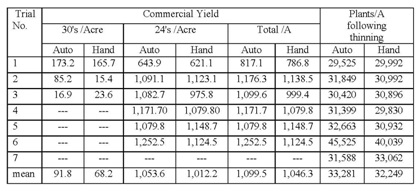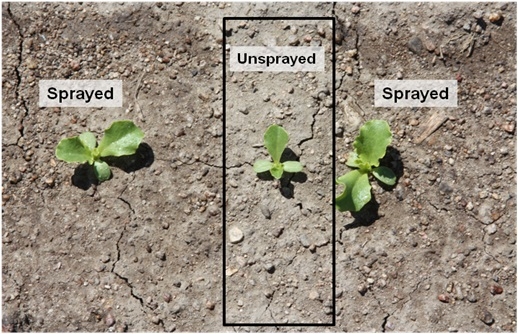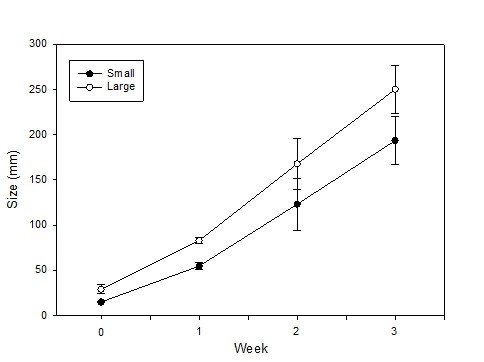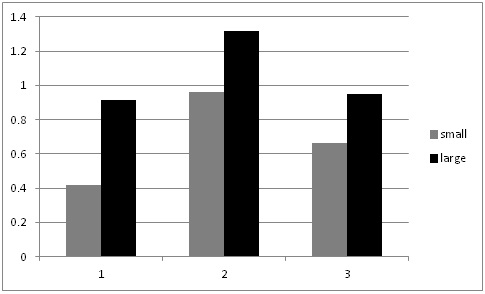This summer, as we conducted our evaluations of automated thinners we had the opportunity to evaluate the impact on yield of selecting small vs larger lettuce plants at thinning (for more information on this project go to: //ucanr.edu/blogs/blogcore/postdetail.cfm?postnum=15932). It stands to reason that selecting larger plants during the thinning process would result in larger plants at harvest and this is a common sense decision that growers and thinning crews routinely make. However, we were not aware of scientific studies that showed the effect of plant size at thinning on crop yield. After thinning by the automated thinner in one field, we noticed that sometimes the automated thinner would select for a smaller plant rather than a larger plant (Figure 1). As a result, we conducted an evaluation of the impact of plant size on final plant yield in three commercial lettuce fields: two head lettuce (Sites 1 & 2) and one green leaf (Site 3). The evaluation was conducted by selecting 20 pairs of ‘small' and ‘larger' lettuce plants; plants were marked so that we could return and evaluate them over the course of the growth cycle. Lettuce plant diameter was measured four times, and at harvest, the heads were stripped to the marketable condition and weighed. Figure 2 shows the trend of plant sizes for three weeks after thinning; the smaller plants never caught up with the larger plants in size during this part of the growth cycle. At harvest, the marketable weight of the smaller plants was significantly less than plants that were larger at thinning (Figure 3).
These results underscore the importance of selection for the largest and most vigorous plants at thinning, whether the plants are thinned by hand or by the automated thinners. We noticed that there may have been a tendency by the automated thinners, in their quest for accurate spacing, to select for small plants. In spite of this observation, our data shows that automated thinners are more accurate than hand thinning and that they have higher yields than hand thinning (Table 1). However, there were also more 30's per acre in the automated thinner treatment than in the hand thinning treatment. Automated thinners have the capacity to select for larger sized plants during the thinning process (they do so by evaluating the number of pixels of the plant). This evaluation indicates that that it is important that they do so in order to maximize the size of the selected plants and the ultimate yield of 24 count boxes.
Table 1. Commercial yield evaluation of automated thinner vs hand thinning treatments and total plants per acre.



